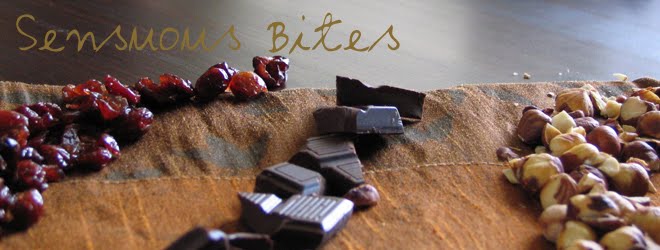
It's been a long, strange trip perfecting this granola recipe. (You have to make a Dead reference in a post about granola, right?). I've gathered tips here and there, merged recipes from different blogs and books and friends... and now here we are.
Granola is something that was daunting to me for a long time. I'm not sure why – for some reason I thought it would take a long time to make, it wouldn't be as good as store bought... I also had no idea what a good granola recipe looked like. I couldn't glance at any old recipe online and judge whether it was worth it to try or not. This all changed a couple of years ago when I tried the Peanut Butter and Chips granola recipe from Have Cake Will Travel. A beautiful thing happens when you follow food blogs – after you've tried enough of someone's recipes, and have had positive results, you come to Trust them. So much so that you can try things that may have scared you in the past. So I made Celine's PB granola (minus the flax meal and chocolate chips, because I didn't have either of those things) one sunny spring day, around this time two years ago. It was a Sunday afternoon – my roommates and I had bowls of granola with almond milk, and sat in the yard playing guitar and soaking up the sun. It was one of those memorable, beautiful spring days when everything is perfect... You suddenly notice plants shooting out of the ground, and the birds come out of hiding. The ice begins to break free and float away on the river, the sun so bright you have to squint to see... The city is alive again, and you remember why you love it.
Maybe it was the springtime fever, but since that day I've been in love with granola. I make a big batch every couple of weeks, experimenting with different flavours and combinations of ingredients. This one is by far my favourite. There are lots of variations you can try with this recipe, too. This time I used pecans and dried cranberries, but another favourite of mine involves hazelnuts and dried cherries. And if you're feeling particularly indulgent – adding some chunks of your favourite chocolate makes this an amazing dessert (or breakfast...).
Espresso Granola
Note: This recipe is pretty forgiving when it comes to sweeteners. I use what I have on hand - mostly brown rice syrup and honey, with some maple syrup mixed in (because who doesn't love maple syrup?!)
3 cups rolled oats
3 pinches sea salt
4 Tbsp finely ground espresso
3/4 cup pecans
200ml brown rice syrup, honey, and/or maple syrup (see note)
1/4 cup light or neutral tasting olive oil
2 tsp vanilla extract
2/3 cup dried cranberries
Directions:
Preheat oven to 300° F.
Mix together the dry ingredients (except the cranberries) in a large mixing bowl. In a separate bowl, whisk together the wet ingredients. Now add the wet ingredients to the dry, and mix thoroughly. This is when I normally put the spoon down and get my hands dirty. But whatever works for you. Now spread the mixture out onto a parchment-lined, rimmed baking sheet. Bake for approximately 40 minutes, stirring and checking every 10 minutes. When the granola has been baking for 30 minutes, check and stir every 5 minutes after that. The granola will crisp up once its cooled and out of the oven. You can tell it's done by the amazing smell, and normally by its golden colour, but with this recipe the espresso prevents you from seeing that. Once cool, stir in the dried cranberries.







